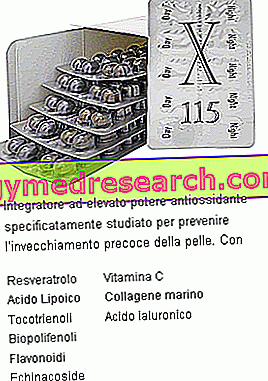Pasteurization of the mixture
"Pasteurization" means the heat treatment to which the mixture is subjected to guarantee the perfect wholesomeness and preservability of the finished product (ice cream, in this case).

During the pasteurization process, the mixture is subjected to temperatures that are high but still lower than the boiling point. At 100 ° C, in fact, the components of the mixture would risk altering and the organoleptic qualities of the ice cream could be affected.
Pasteurization can be performed in three ways:
- Elevation of the mixture temperature at 65 ° C and maintenance for 30 minutes (low pasteurization)
- Heating of the mixture at 72 ° C for 15 minutes (medium pasteurization)
- Elevation of temperature at 85 ° C and maintenance for 2-3 minutes (high pasteurization)
Whatever the chosen pasteurization method, it is important to abruptly reduce the final temperature of the mixture to 4-5 ° C. The sudden reduction in temperature is important to prevent heat-resistant bacteria from resuming their activity. We recall, in fact, that some microorganisms capable of resisting pasteurization temperatures are able to resume their activity if conditions are favorable: the sudden decrease in temperature paralyzes activity and the development of any bacteria.
In addition to guaranteeing microbial reclamation, pasteurization is essential to favor the dissolution of sugars, partially denature proteins (albumin and globulin), help improve water retention capacity and facilitate the activity of emulsifiers and fatty substances ( made liquid by heat).
During pasteurization, the mixture must also undergo a homogenization process: in other words, the components must be perfectly emulsified by crushing the fat globules. In this way, the fats - now reduced to very small particles - can more easily remain in suspension in the liquid in which they were dispersed.
In an industrial environment, an instrument called a homogenizer or emulsifier is used; at home, it is sufficient to obtain a simple manual whip or an immersion mixer.
Maturation of the mixture
It is a very important stage for the development of ice cream. After pasteurization and homogenization, the mixture should be left to rest (or better "mature") for 6-12 hours at low temperatures (4-5 ° C).
The maturation of the mixture allows the solid substances contained in it to hydrate perfectly and the stabilizers to complete their action. At the end of 6-12 hours, the mixture will have reached a perfect balance and the mass will appear denser, creamy and homogeneous.
Furthermore, the maturation of the mixture is important to reduce the formation of ice crystals in the subsequent phase of freezing of the mass.
Creamy ice cream (chilling or freezing)
During the creaming phase the mixture is transformed into ice cream and incorporates air: the mass, therefore, comes to life and takes on the appearance of a thick, compact and pasty cream. Freezing, freezing and freezing are three terms that, in ice cream, are used as synonyms and indicate that process leads to the formation of ice cream.
The machine capable of transforming the mixture into ice cream is indicated by the term "mantecatore". At the household level, the batch freezer takes on a simpler connotation and is called "ice cream maker".
The freezing time depends on the type of batch freezer you are using and the ingredients of the mixture. Clearly, the higher the amount of sugar and fat in the mixture, the longer it will take the batch freezer to firm the mass.
At home level ...
The artisan batch freezer is nothing but a professional ice cream maker.
However, there are other types of ice cream makers accessible to all lovers of homemade ice cream:
- Accumulation ice cream maker: it consists of a cooling tank and a motor. Before use, the tank must be placed in the freezer for 12-24 hours.
- Self-refrigerating ice cream maker: it does not include the pre-freezing of the tub because it is equipped with its own refrigerating system. These types of ice cream makers are definitely more expensive than the previous ones.
Pistachio ice cream
X Problems with video playback? Reload from YouTube Go to Video Page Go to Video Recipes Section Watch the video on youtubeFirming ice cream
At the artisan and industrial level, the firming of ice cream is an important step that allows the mass to compact and harden to the right point.
When leaving the batch freezer, in fact, the ice cream temperature fluctuates between -5 ° C and -8 ° C. At these temperatures it is not possible to preserve the ice cream for a long time because the mass would tend to rapidly lose the structure formed during the freezing phase. For this reason, the ice cream should be left to consolidate at -20 / -22 ° C for a few hours. After that, it can be served.
At home level, this phase is not always respected, although it is advisable to let the mass coagulate in the freezer for a couple of hours, immediately after the creaming phase.



